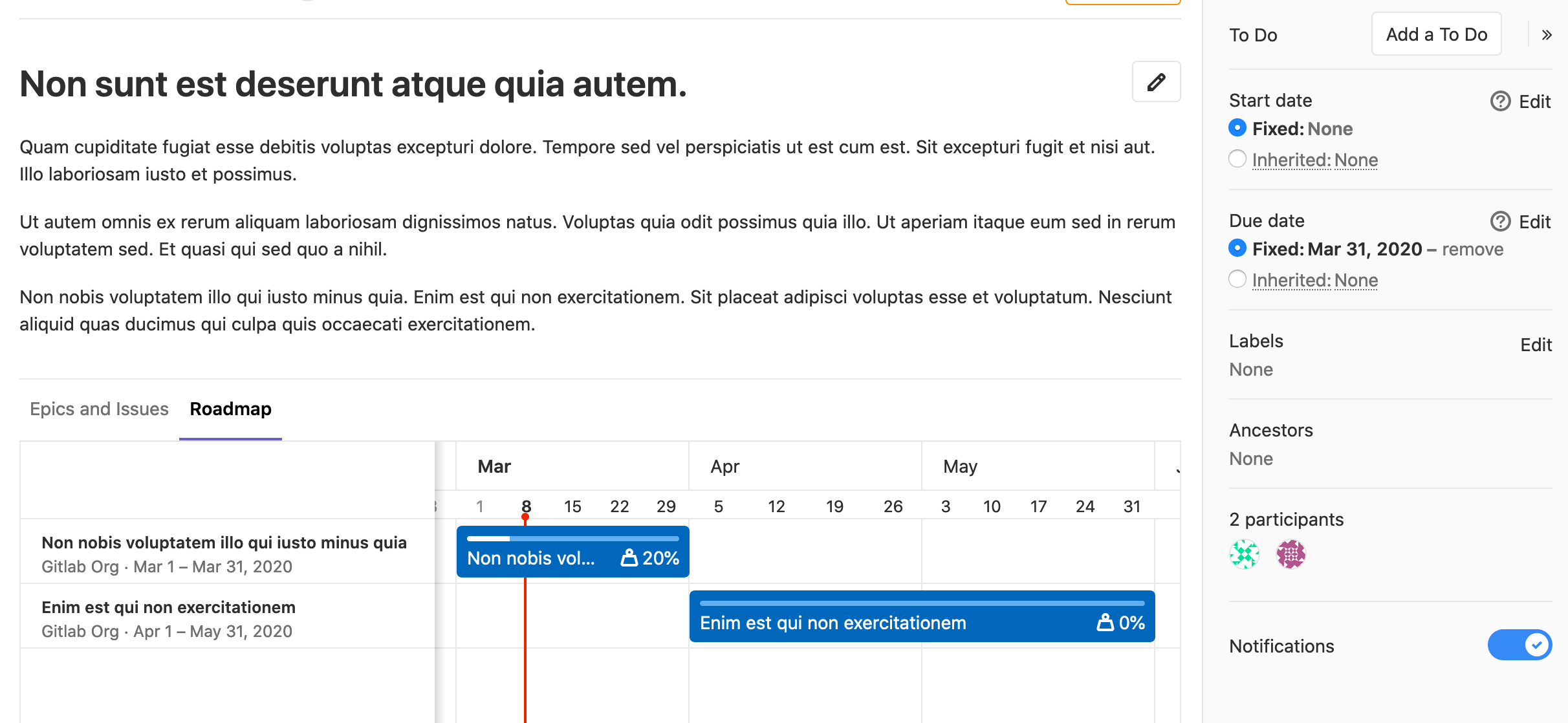Epics
DETAILS: Tier: Premium, Ultimate Offering: GitLab.com, Self-managed, GitLab Dedicated
An epic in GitLab describes a large body of work that can be broken down into smaller parts. Epics organize issues and features into a high-level theme or goal.
When issues share a theme across projects and milestones, you can group them by using epics.
You can also create child epics and assign start and end dates, which creates a visual roadmap for you to view progress.
Use epics:
- When your team is working on a large feature that involves multiple discussions in different issues in different projects in a group.
- To track when the work for the group of issues is targeted to begin and end.
- To discuss and collaborate on feature ideas and scope at a high level.
Relationships between epics and issues
The possible relationships between epics and issues are:
- An epic is the parent of one or more issues.
- An epic is the parent of one or more child epics. Ultimate only.
%%{init: { "fontFamily": "GitLab Sans" }}%%
graph TD
accTitle: Epics and issues
accDescr: How issues and child epics relate to parent epics
Parent_epic --> Issue1
Parent_epic --> Child_epic
Child_epic --> Issue2Also, read more about possible planning hierarchies.
Child issues from different group hierarchies
- Introduced in GitLab 15.5 with a flag named
epic_issues_from_different_hierarchies. Disabled by default.- Enabled on GitLab.com in GitLab 15.5.
- Feature flag
epic_issues_from_different_hierarchiesremoved in GitLab 15.6.
You can add issues from a different group hierarchy to an epic. To do it, paste the issue URL when adding an existing issue.
Roadmap in epics
DETAILS: Tier: Ultimate Offering: GitLab.com, Self-managed, GitLab Dedicated
If your epic contains one or more child epics that have a start or due date, a visual roadmap of the child epics is listed under the parent epic.
Related topics
- Manage epics and multi-level child epics.
- Link related epics based on a type of relationship.
- Create workflows with epic boards.
- Turn on notifications for about epic events.
- Add an emoji reaction to an epic or its comments.
- Collaborate on an epic by posting comments in a thread.
- Use health status to track your progress.
